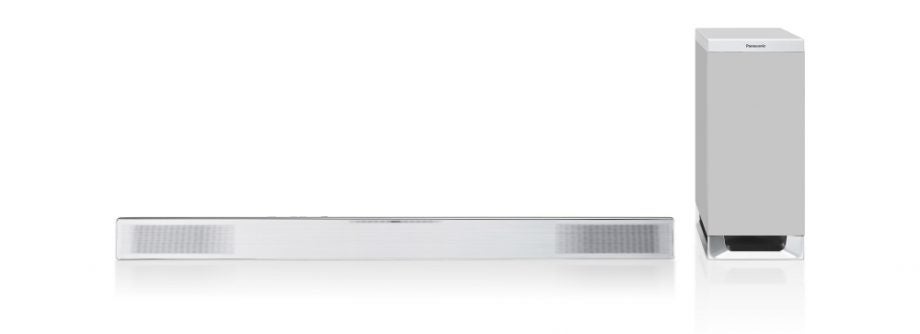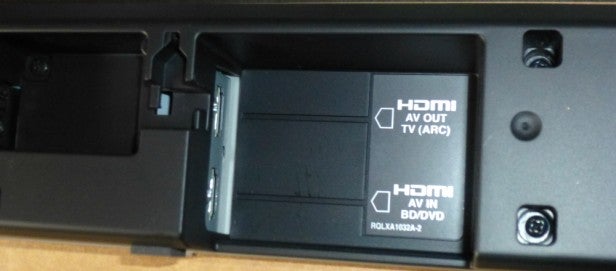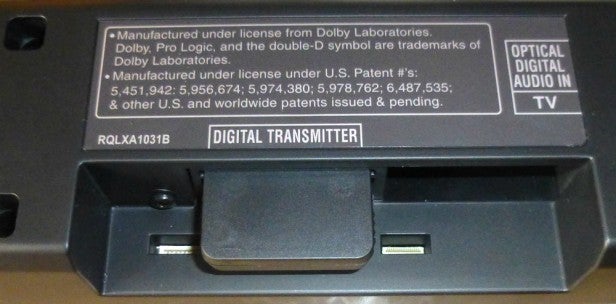Panasonic SU-HTB527 Review
Panasonic SU-HTB527
A simple but effective soundbar and wireless subwoofer

Sections
- Page 1 Panasonic SU-HTB527 Review
- Page 2 Operation, Performance & Verdict Review
Verdict
Pros
- Attractive design and slim dimensions
- Engaging, powerful sound
- Wireless subwoofer
- Occasional brashness at loud volumes
Cons
- Not enough features for the money
- Limited connections
Key Specifications
- Review Price: £299.99
- 240W power output
- Dolby Digital & DTS decoding
- Dolby Pro Logic II, Virtual Speaker & 3D Sound
- Wireless subwoofer
- HDMI in/out with ARC, CEC & 3D support
What is the Panasonic SU-HTB527?
Panasonic’s entry-level soundbar lacks the flexibility of the step-up Panasonic SU-HTB527 and Panasonic SC-HTB770, both of which ket you split the soundbar in two and use it like a conventional 2.1 system. Here the soundbar stays in one piece, but like its stable mates it comes with a separate wireless subwoofer that provides extra bass oomph without the mess.
Panasonic SU-HTB527 soundbar not for you? Check out our round up of the best soundbars to buy
Panasonic SU-HTB527 – Design
The soundbar is designed with similar panache to the pricier HTB527 – its delicious brushed silver finish exudes an air of elegance. It measures 1018mm wide, which makes it best suited to TVs between 47 and 55-inch, and with a depth of 44mm it’s slim enough not to stand out like a sore thumb when wall-mounted.
Unlike the Samsung HW-F751, there’s no display panel on the front, which makes it much harder to tell which modes and inputs are selected. As we’ll discover later, this makes the system tricky to use. On top of the soundbar is a row of buttons controlling volume, power and input selection.

On the unit’s black back-end is a recess housing a modest selection of sockets. This space is fairly cramped, which makes it a tad difficult to plug-in HDMI cables – particularly thick ones.
There’s an HDMI input and output, so you can feed digital audio to the unit while piping 3D video through to your TV. And the even better news is that the output supports Audio Return Channel, which means it can receive sound from a compatible TV without you having to rig up a separate audio cable.
As a back-up there’s also an optical digital audio input, but unusually there are no analogue inputs (RCA or 3.5mm minijack), which means playback from MP3 players and other music devices is a no-go.

Elsewhere on the rear panel is a slot for the supplied wireless transmitter, which beams bass to the subwoofer using the 2.4GHz frequency. The down-firing sub is attractively styled in silver, with a hollowed out base allowing the bass to escape – but its build quality isn’t particularly impressive.
Panasonic SU-HTB527 – Features
As an entry-level model, the Panasonic SU-HTB527 is a no-frills affair – the wireless sub is probably the headline feature. It’s disappointing that there’s no built-in Bluetooth at this price (found on the step-up systems) but there are a couple of tricks up its sleeve.
Under the bonnet are built-in Dolby Digital and DTS decoders, allowing you to feed the bitstream directly into the unit from a TV or disc player. It won’t decode Dolby True HD or DTS HD Master Audio, but you’ll still get the hi-res benefits of these formats by feeding the signal as LPCM via HDMI from a Blu-ray deck.
This is backed up by Dolby Pro Logic II to jazz up stereo signals and Dolby Virtual Speaker processing to widen the soundstage. Panasonic’s 3D Sound mode builds on the latter by expanding the sound in all directions, supposedly enhancing the experience of watching 3D movies.
Total power is rated at 240W, with 60W to each speaker and 120W from the subwoofer. The soundbar uses two 6.5cm woofers and two 2.5cm semi-dome tweeters, while the sub employs a single 16cm woofer.

